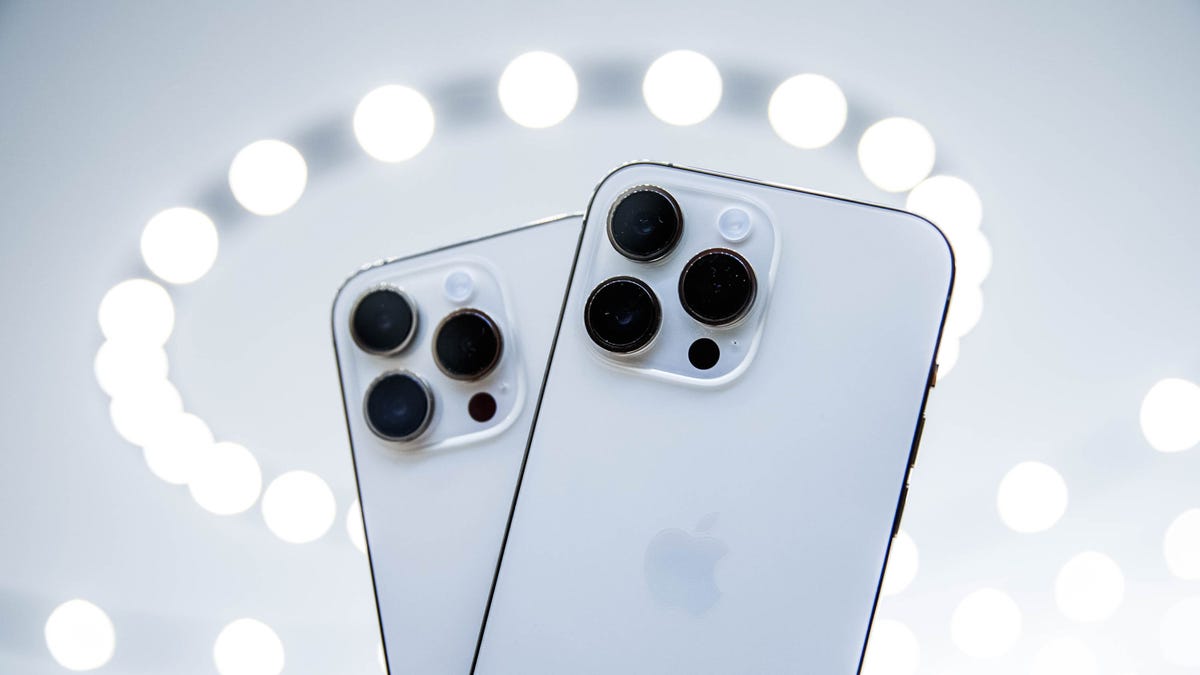What the 'Worse' Preorders for iPhone 14 Really Mean
The iPhone 14 Pro and Pro Max make up over 80% of preorders as early adopters lean away from the base iPhone 14. Here's why.

Apple unveiled the iPhone 14 lineup last week with the usual fanfare, but an early indicator suggests that fans aren't clamoring for the base models and instead are focused on the iPhone 14 Pro and Pro Max.
The iPhone 14 might be the loser of Apple's new phone lineup.
Notable Apple analyst Ming-Chi Kuo said in a blog post on Monday that preorders for the iPhone 14 and iPhone 14 Plus are "worse than iPhone SE 3 and iPhone 13 Mini."
There are a couple likely reasons why consumers are avoiding the baseline iPhone 14 models. Those phones didn't receive any of the more exciting features coming to the iPhone 14 Pro and Pro Max, like the faster A16 processor and sharper 48-megapixel main camera. In addition, consumers don't feel the price difference between the $800 iPhone 14 and $1,000 iPhone 14 Pro thanks to big promotions from carriers and generous trade-in values from Apple.
In 2022, it's easier than ever to go Pro.
"In terms of the base [iPhone 14] compared to the price points, it's just too compelling to do [iPhone 14 Pro]," said Dan Ives, managing editor of equity research at Wedbush Securities. "The carrier discounts and promotions are significant."
This continues the evolution of the Pro models from a nice-to-have luxury to a must-get purchase for anyone upgrading to a new iPhone. The gap between the two lines has widened considerably over the years, starting with just size, then camera and now a whole set of features including the new camera cutout and the heavily touted Dynamic Island feature. Anyone who wants to show off the fact they have a new iPhone will have to pay extra for the physically different one.
It doesn't hurt that Apple likely turns a higher profit on those Pro models.
Carriers are helping with the upgrade game. With $800 to $1,000 off new iPhones, carriers are incentivizing consumers to opt for pricier Pro and Pro Max phones. But there's another undercurrent that's bolstering sales right now: Around 240 million of the 1 billion iPhones have been in their owners' hands for three and a half years or more, according to Ives' research, and those people may upgrade.
When they do, they're less likely to pick the baseline iPhone 14. There's not much new over the iPhone 13 released last year or the iPhone 12 in 2020, leading CNET's Patrick Holland to say that "there's no compelling reason to upgrade from either of those phones" to the new iPhone 14. It doesn't get a new chipset, misses out on the sharper main camera and lacks the fun "Dynamic Island" app bubble as well as the always-on display, all features that make the iPhone 14 Pro and Pro Max more advanced than last year's phones.
At least the $900 iPhone 14 Plus has a larger screen than the baseline iPhone 14 despite not getting any extra features, and it could be more endearing to consumers than the iPhone 13 Mini, which appealed to a loyal but niche subset of Apple phone buyers. But for just $100 more, consumers can opt for the iPhone 14 Pro.
The dominance of the iPhone 14 Pro and Pro Max may have surprised even Apple, as preorders for the higher-tier phones now list delivery windows into mid- and late October. While reports indicate Apple ordered 90 million iPhone 14 series phones for the holiday quarter, which is on par with how many iPhone 13 series phones it shipped last year for the same period, the spike in preorders for the Pro and Pro Max models could mean Apple has to increase its orders for the holidays -- if not, stores could run out of the higher-tier iPhones in a month.
Preorders after launch are a relatively stable predictor of iPhone sales over the last five years of holiday seasons. While sales could level off after this initial bump of early adopters, it's likely that despite inflation and more conservative consumer spending toward the end of the year, this could be a big holiday season for Apple.
"It would be one for the record books in Cupertino," Ives said.

